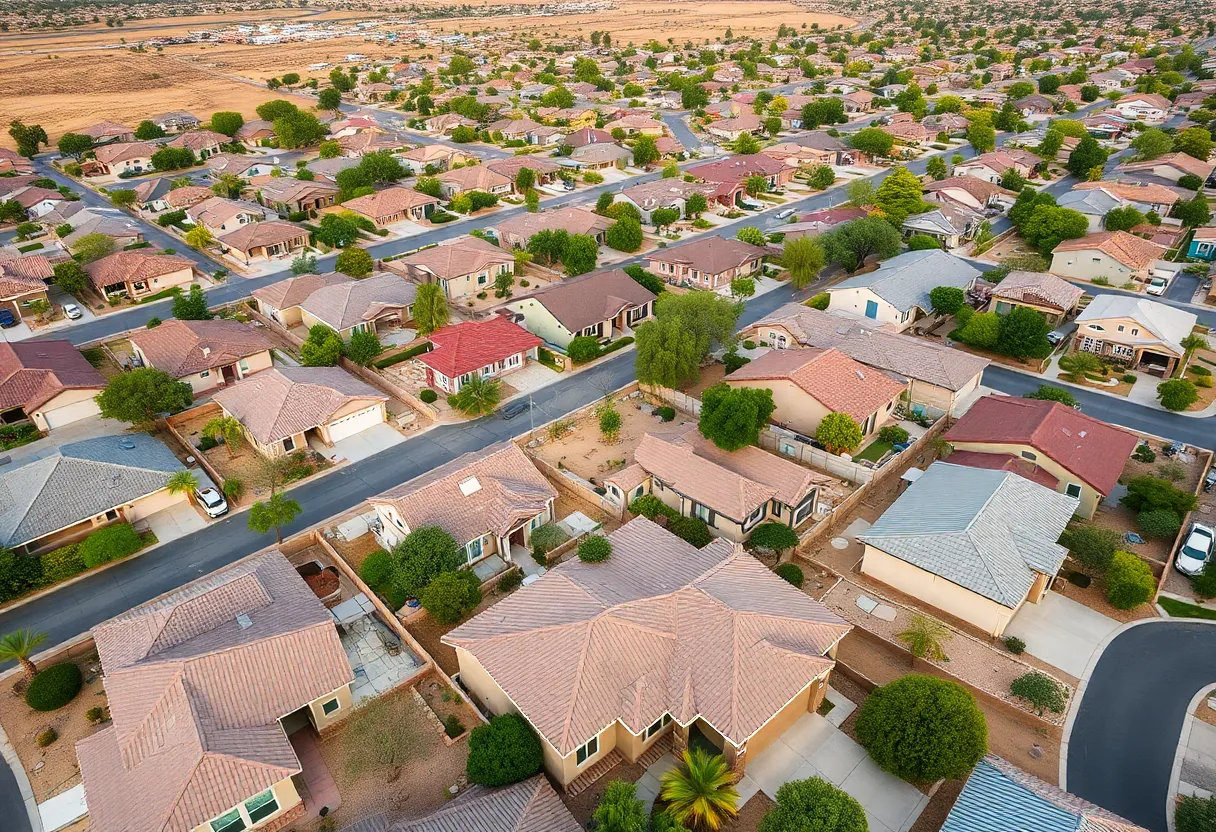News Summary
Arizona is facing a significant housing crisis, with homeownership becoming increasingly unattainable for families. The average income required to buy a typical home has soared to $122,000, a dramatic rise from the $71,000 needed just three years ago. Renters are also feeling the strain, with a 57% increase in rents since 2019. Essential workers and seniors are especially affected, while assistance programs and new affordable housing projects aim to alleviate the situation.
Arizona’s Housing Crisis: Costs Soar and Options Fall Short
In the sunny state of Arizona, homeownership is becoming a distant dream for many. With the current average income required to afford a typical home skyrocketing to _$122,000_, the housing market is proving to be more challenging than ever before. Just three years ago, in 2020, the average needed income was around _$71,000_, meaning a whopping $50,000 increase for families looking to buy a house in this beautiful state.
Affordability on Everyone’s Mind
The situation has compelled many Arizona families to make tough decisions as they grapple with soaring housing costs. In fact, rents have surged by a staggering 57% since 2019. This has led over half of all renters in the state to spend more than 30% of their monthly income on housing, which is a key indicator of financial strain.
Solutions and Assistance Await
So, what can potential buyers do in this tough market? Experts suggest using an online calculator that can help assess affordability based on income and debts. This can provide individuals with a clearer picture of where they stand. Additionally, considering a condo or townhome could be a viable option for those wanting to downsize their costs while still enjoying their own space.
Improving credit scores is another tip that is gaining traction as it can directly influence mortgage rates, making monthly payments more manageable. For those finding it hard to scrape together a down payment, there are various down payment assistance programs available, enabling many to take that crucial first step toward homeownership.
Housing Woes Reach All Corners
Meanwhile, the situation has been particularly heartbreaking for essential workers like teachers and nurses. Many are being priced out of their communities, making it hard for them to build connections and serve their neighborhoods effectively. Seniors throughout Arizona are also feeling the pinch, waiting anxiously for affordable housing while witnessing a sharp rise in rental costs.
The Arizona Department of Housing (ADOH) has stepped up, delivering over _$1.24 billion_ in aid last year to finance critical affordable housing initiatives. Despite these efforts, an audit highlighted areas for improvement. Nevertheless, ADOH continues to play a vital role in ensuring housing stability across the state.
Slow Progress on Affordable Housing
A significant component of the affordable housing solution relies on the Low-Income Housing Tax Credit (LIHTC). This program encourages the development of cheaper housing options but is currently facing challenges. Only 8.5% of new housing units qualifying as affordable in Arizona illustrates the uphill battle still being fought. Since its inception, the LIHTC program has generated an impressive _$745 million in economic activity_ and created around 4,500 jobs, but circumstances suggest a need for expansion, currently capped at _$4 million_.
Exciting new affordable housing projects are in the works, with developments such as 64 units for seniors in Globe and 72 units in Prescott Valley. However, not every proposal has gone smoothly—recent plans for a senior and veteran housing project in Chandler hit a snag, facing community pushback over its location.
Possible Relief in Rentals
Interestingly, there may be a light at the end of the tunnel for renters! Some rents have experienced a slight decline, reportedly dropping by as much as 10%. This change is attributed to an increase in housing availability following the pandemic and a decrease in temporary residents.
Nevertheless, Arizona still ranks as one of the most challenging states for housing wages. It stands as the 14th highest state for the necessary income to rent a modest one-bedroom apartment, with the average rent for a studio apartment hovering around _$1,289_. For those living alone, Arizona holds the title of the eighth most expensive state, requiring residents to allocate nearly 27.48% of their disposable income towards renting a studio.
As the housing crisis unfolds, many Arizonians are left wondering what the future holds for home ownership and affordability. With so many stakeholders involved, from developers to government organizations, only time will tell if relief is on the way.
Deeper Dive: News & Info About This Topic
HERE Resources
Arizonans Rejoice as Homeownership Costs Remain Manageable
Concerns Grow in Arizona Over Tariffs and Economic Impact
Arizona’s Housing Market: Income Requirements and Rent Changes for 2024
Arizona’s Small Businesses Struggle Amid Federal Funding Freeze
New Affordable Housing Developments Emerge in Phoenix Amidst Housing Crisis
Midwest Rental Markets Flourish Amid Changes in Phoenix
Arizona Schools Face Crisis Amid Financial Struggles
Arizona Faces Critical Housing Crisis
New Life for Foreclosed Property in East Phoenix
Arizona Faces Housing Crisis as Prices Soar Amid Shortage
Additional Resources
- Arizona Capitol Times: Arizona’s Housing Crossroads
- Google Search: Arizona’s Housing Crisis
- ABC15: Chandler Housing Project Not Moving Forward
- Wikipedia: Affordable Housing
- AZCentral: Arizona’s Expensive Rent for Studio Apartments
- Encyclopedia Britannica: Housing
- Arizona Mirror: More Low and Middle Income Families in Arizona
- Google Scholar: Arizona Housing Crisis
- Arizona Daily Sun: Expanding Low-Income Housing for Older Adults
- Google News: Affordable Housing Arizona

Author: STAFF HERE PHOENIX WRITER
The PHOENIX STAFF WRITER represents the experienced team at HEREPhoenix.com, your go-to source for actionable local news and information in Phoenix, Maricopa County, and beyond. Specializing in "news you can use," we cover essential topics like product reviews for personal and business needs, local business directories, politics, real estate trends, neighborhood insights, and state news affecting the area—with deep expertise drawn from years of dedicated reporting and strong community input, including local press releases and business updates. We deliver top reporting on high-value events such as the Waste Management Phoenix Open, Cactus League Spring Training, and Arizona State Fair. Our coverage extends to key organizations like the Greater Phoenix Chamber of Commerce and Visit Phoenix, plus leading businesses in technology and healthcare that power the local economy such as Intel and Banner Health. As part of the broader HERE network, including HERETucson.com, we provide comprehensive, credible insights into Arizona's dynamic landscape.





